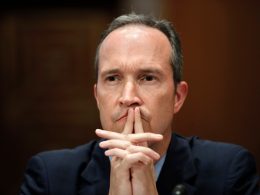In an updated projection released this week, the Congressional Budget Office moved up its estimate for when deaths will outpace births, putting that event horizon only eight years away, in 2033. That would mean a country suffering from the particular malaise that’s afflicted Japan, Norway, the U.K. and elsewhere: an aging population with a dwindling worker base, essentially an economic ticking time bomb. But our saving grace is immigration and the Golden Door must be kept open.
It is the influx of newcomers, which is expected not only to counteract this inverted birth-death ratio, but keep the U.S. population growing — at least if we can shut out the counterproductive anti-immigrant voices and embrace the benefits of an effective system of mass immigration.
We are used to having the ability to debate exactly how to contend with the millions of people clamoring to contribute their talents to the American project, but this is not a law of the universe.
So far, the nation’s economic prospects and cultural saliency as the de facto country of immigrants has meant that, despite sometimes harsher and sometimes looser policies, people want to come and settle down and become business owners and nurses and technicians and artists. If conditions are hostile enough for long enough, as the incoming Trump administration promises, they’ll look elsewhere, taking their talents and potential for population revitalization to Canada, or Germany, or Australia.
International students that have been the leading edge of, for example, medical research in this country for years will have other institutions to turn to. The lower-skilled workers who power the entire food production sector and construction — the exact type of workers who will now be needed to, for example, rebuild fire-ravaged Los Angeles — might just leave, the type of departure that some nativists gleefully call “self-deportation.” What’s the plan then? If we ever hit that reality, it is not going to be easy to put the genie back in the bottle, and the population panorama starts looking far more grim, with steep population declines that will be felt nationwide.
That’s not to say there aren’t other ways of boosting population growth, and political leaders are increasingly coming around to the idea that having children is something that needs to be to some extent incentivized with policy action, whether it’s directly targeted — for example, expanded child tax credits and child care subsidization — or generally having necessities like proper housing within reach. There’s much that can bump the calculus to have a child over the edge towards where young people can feel stable in doing so, and we should be moving in this direction.
This is very unlikely to happen fast enough or at the scale necessary to put the U.S. on a path to population growth or even retention sans significant immigration. Even if it could, there’s no real reason to do this. Despite successive anti-immigrant panics — against Chinese, Irish, Italians, Jews and on and on — throughout the course of our entire history, every migration wave has fully integrated into the social and economic fabric of the country and made it stronger for it. We won’t feel the impact of killing the goose that lays the golden eggs until it is much too late.








